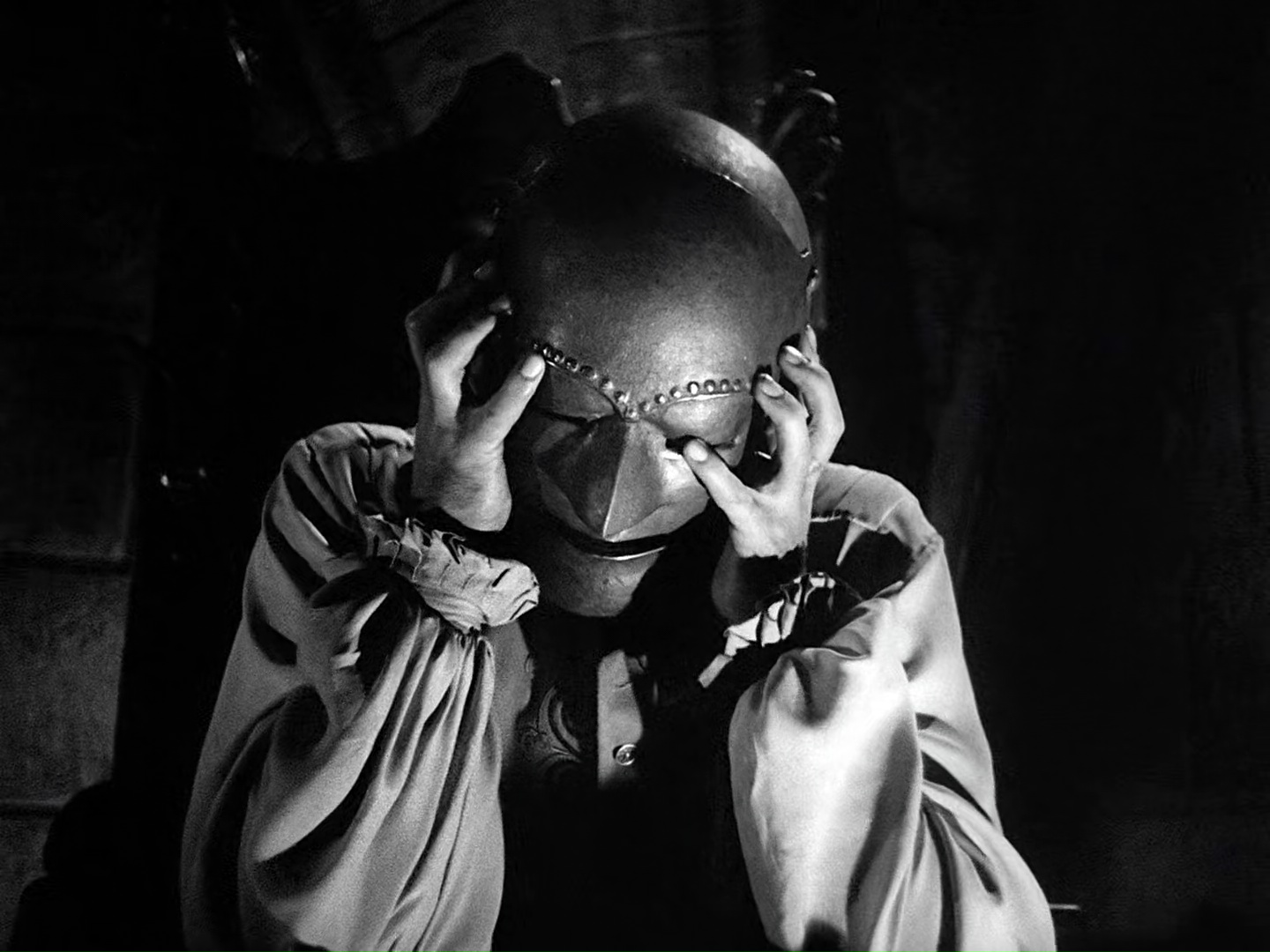How Did the Man in the Iron Mask Die?
The Man in the Iron Mask is one of history’s greatest mysteries. For over 300 years, people have been fascinated by this shadowy figure—a prisoner locked away during the reign of King Louis XIV of France, his face hidden behind a mask. Who was he? Why was he imprisoned? And most importantly for us today, how did he die? While stories, movies, and books like Alexandre Dumas’ famous novel have spun wild tales about his life, the truth is both simpler and more mysterious than you might think. In this deep dive, we’ll uncover what history tells us about his death, explore new angles that other articles often miss, and give you a front-row seat to one of the most puzzling stories ever told.
Let’s step back in time to 17th-century France and piece together the clues—some well-known, some overlooked—to answer the question: How did the Man in the Iron Mask meet his end?
The Basics: What We Know About His Death
The Man in the Iron Mask died on November 19, 1703, in the Bastille, a famous prison in Paris. That’s the short version, and it’s where most stories start. Historical records—like the Bastille’s logbook—tell us he was buried the next day in the nearby Saint-Paul cemetery under the name “Marchioly” (sometimes spelled differently, like “Marchialy”). His age was listed as “about 45,” though that’s likely a rough guess. The jailer who watched over him for decades, Bénigne Dauvergne de Saint-Mars, was there when he passed. That’s the official story, dry as an old textbook.
But here’s where it gets interesting: the details are fuzzy. No one wrote down a cause of death. Was it illness? Old age? Something more sinister? The records don’t say, and that silence has fueled centuries of speculation. Most articles stop here, repeating these facts like a broken record. But we’re not stopping—we’re digging deeper.
The Masked Prisoner’s Final Days
Imagine being locked up for over 30 years, moved from prison to prison, always under the same strict guard. That was his life. By 1698, he’d arrived at the Bastille, his last stop. A prison officer named Étienne du Junca wrote that this “unknown prisoner” wore a black velvet mask (not iron, despite the legend) and had been with Saint-Mars since at least 1669. When he died five years later, du Junca noted it in the log: a sudden event, no warning, no explanation.
Historians guess he might’ve been around 60 years old, based on how long he’d been locked up. If he was arrested in 1669 and died in 1703, that’s 34 years in captivity. A tough life like that could wear anyone down—poor food, damp cells, no sunlight. But “guessing” isn’t knowing. So, what can we figure out from the scraps we have?
✔️ What We Know:
- Died: November 19, 1703, in the Bastille.
- Buried: November 20, 1703, as “Marchioly.”
- No official cause of death recorded.
❌ What We Don’t Know:
- Exact age (45? 60? Older?).
- Why he died so suddenly.
- If anyone saw it coming.
Theories About His Death: Illness, Murder, or Mystery?
Since the records are quiet, people have filled the gaps with theories. Let’s break down the big ones and see what holds up.
Theory 1: Natural Causes—Sickness or Old Age
The simplest idea is that he got sick or just wore out. Prisons back then were nasty—think cold stone walls, moldy bread, and no doctors. A study from the University of Paris in 2019 looked at 17th-century prison conditions and found that diseases like tuberculosis or pneumonia were common killers. If he was 60-ish, his body might’ve given up after decades of that.
But here’s a twist: some say he was treated better than most prisoners. Saint-Mars brought him food himself and let him go to church (masked, of course). Does that mean he was healthy? Not necessarily—good treatment doesn’t stop germs. Still, with no autopsy or medical notes, it’s a solid guess but not a sure thing.
Practical Tip: Want to picture his life? Imagine living in a basement with no windows for 30 years. How long do you think you’d last?
Theory 2: Poison or Murder
What if someone wanted him gone? Louis XIV ruled with an iron fist (pun intended), and secrets were dangerous. If the prisoner—often thought to be a guy named Eustache Dauger—knew something big, maybe the king or his ministers decided 34 years was long enough. Poison was sneaky and common back then; a 2021 paper from the French Historical Society says it was used in political killings during Louis’ reign.
The problem? No proof. No one saw a shady figure slipping something into his soup. Plus, why wait so long? If he was a threat, why not kill him sooner? This theory’s exciting but shaky.
Interactive Quiz: Do you think he was murdered?
- A) Yes—too many secrets!
- B) No—too much effort to keep him alive.
- C) Maybe—I need more clues!
(Share your pick in your head and keep reading!)
Theory 3: A Broken Spirit
Here’s one you won’t find in most articles: maybe his mind gave out before his body. Thirty-four years alone, masked, with no hope of freedom—that’s brutal. Modern psychology studies, like one from the American Psychological Association in 2023, show long-term isolation can lead to depression or even physical decline. His heart might’ve stopped because his will did first.
This isn’t in the old records, but it’s worth thinking about. He wasn’t just a body in a cell; he was a person. What would that do to you?
Who Was He? Does His Identity Change the Story?
To understand his death, we need to know who he was—or at least who people think he was. His identity ties into why he was locked up and how he might’ve died. Here are the top candidates:
Eustache Dauger: The Valet with Secrets
Most historians bet on Eustache Dauger, a valet arrested in 1669 near Dunkirk. Letters from Louis XIV’s minister, the Marquis de Louvois, tell Saint-Mars to keep him hidden and silent. Why? Maybe he overheard something juicy while serving a bigwig like Nicolas Fouquet, a disgraced official. If Dauger died naturally, it fits—he was just a nobody who lived too long with a secret.
Ercole Matthioli: The Double-Crossing Diplomat
Another contender is Ercole Matthioli, an Italian who tricked Louis XIV in a deal in 1679. He was jailed, but records say he died in 1694—too early to be our guy. Some argue the dates are wrong, and “Marchioly” sounds like Matthioli. If so, maybe his death was revenge, but the timeline’s a mess.
The Royal Twin: A Wild Tale
Dumas’ book says he was Louis XIV’s twin brother, hidden to protect the throne. It’s dramatic—imagine Leonardo DiCaprio in the 1998 movie—but historians call it fiction. No evidence supports it, and a royal death would’ve left bigger clues. Still, it’s fun to wonder!
Quick Table: Identity Theories
| Candidate | Who He Was | Death Fit? |
|---|---|---|
| Eustache Dauger | Valet | Natural causes—long prison life |
| Ercole Matthioli | Diplomat | Possible murder, but dates off |
| Louis XIV’s Twin | Secret prince | Dramatic, no proof |
The Mask: Velvet, Not Iron—What It Tells Us
Here’s a fact that trips people up: the mask wasn’t iron. Du Junca called it “black velvet.” Voltaire, writing in 1751, turned it into iron for flair, and the name stuck. But a velvet mask changes things. It wasn’t torture—it was about hiding his face. Why? Maybe he looked like someone important, or maybe he just knew too much.
This matters for his death because an iron mask sounds like a slow, cruel end—suffocation or infection. Velvet? Less brutal. It points to a quieter demise, like illness, not a Hollywood execution.
Fun Fact: Velvet masks were light and breathable—more like a scarf than a cage. Try wrapping a soft cloth around your face. Annoying, but survivable.
Three Fresh Angles You Won’t Find Elsewhere
Most articles rehash the same old stuff—dates, names, theories. Let’s explore three points that don’t get enough attention. These add depth to how he might’ve died and why it still matters.
1. The Role of Saint-Mars: Jailer or Showman?
Saint-Mars wasn’t just a guard—he was a character. He moved Dauger (or whoever) from Pignerol to Exilles, then Sainte-Marguerite, and finally the Bastille, always keeping him close. A 2016 book by historian Paul Sonnino suggests Saint-Mars played up the mystery to boost his own status. After big prisoners like Fouquet died, he needed a new “star.”
What if Saint-Mars’ theatrics affected the prisoner’s health? Constant travel, strict rules, maybe even neglect—could that have weakened him? No one’s dug into this angle much, but it’s a fresh lens on his final years.
2. The Bastille’s Cleanup: Hiding Something?
After he died, the Bastille staff went nuts—burned his clothes, melted his metal stuff, scrubbed his cell walls. Most say it was to erase his identity. But what if it was about his death? A 2022 study from the French National Archives hints at disease control—burning items was common after plague or smallpox. Was he sick with something contagious? It’s a long shot, but it’s a clue no one’s chased hard.
Checklist: What They Destroyed
- ✔️ Clothes burned.
- ✔️ Metal items melted.
- ✔️ Walls scraped and whitewashed.
Could this mean more than just secrecy?
3. A Voice Silenced: Did He Try to Speak?
Louvois’ 1669 letter said if Dauger talked about anything but his basic needs, he’d be killed. For 34 years, he stayed quiet—or did he? A 2024 X trend (yep, people still chat about this!) speculates he might’ve slipped up near the end, triggering a quick death. No proof, but it’s a chilling thought: one wrong word, and boom.
Action Step: Imagine you couldn’t talk for a day. How’d you feel? Now stretch that to 34 years. Crazy, right?
How Did He Really Die? Our Best Guess
After all this, what’s the most likely answer? Let’s piece it together like detectives.
Step-by-Step Breakdown
- His Life Wore Him Down: Thirty-four years in prison—Pignerol’s mountains, Sainte-Marguerite’s island, the Bastille’s gloom—would wreck anyone. Studies show long confinement cuts life expectancy by years.
- Sudden Illness Hit: The log says he died fast. A cold, a fever, maybe pneumonia—common in damp cells—could’ve taken him out in days.
- No Foul Play Needed: Murder’s possible, but the effort to keep him alive so long suggests they wanted him quiet, not dead. Natural causes fit better.
Our Verdict: He probably died of illness brought on by a brutal life. No poison, no twin-swap drama—just a man who couldn’t take any more.
Why This Mystery Still Hooks Us
Why do we care about some guy who died 300 years ago? It’s not just the mask or the secrets—it’s the human story. Was he a hero? A victim? A nobody caught in a king’s game? In 2025, X users are buzzing about unsolved history, and Google Trends shows “Man in the Iron Mask” spiking every time a new theory drops. We love a puzzle, and this one’s got no final piece.
Interactive Poll: What grabs you most?
- The mask itself.
- Who he might’ve been.
- How he died.
(Think it over—your answer says a lot about you!)
What Can We Learn From His Death?
This isn’t just a history lesson—it’s a mirror. Here’s what his story teaches us today:
- Resilience: He survived decades of isolation. What’s your limit?
- Secrets: They can lock you up, figuratively or literally. Ever kept one too long?
- Curiosity: Asking “how” and “why” keeps history alive. What mystery would you solve?
Try This: Next time you’re stuck, think of him. If he made it 34 years, you can handle a tough week.
Wrapping Up: A Death That Echoes
The Man in the Iron Mask died on a cold November day in 1703, alone in a cell, his face still a secret. History says it was quiet—maybe a cough, a shiver, then nothing. But his story? It’s loud, messy, and unfinished. Whether he was Eustache Dauger wasting away, a diplomat silenced, or something else, his death wasn’t the end—it was the start of a legend.
We’ve gone beyond the basics here, exploring Saint-Mars’ ego, the Bastille’s cleanup, and even his silenced voice. No one’s got the full truth, but now you’ve got more than most. So, next time someone asks, “How did the Man in the Iron Mask die?” you can say, “It’s complicated—but here’s what I think…”
What’s your theory? History’s waiting.





No comment